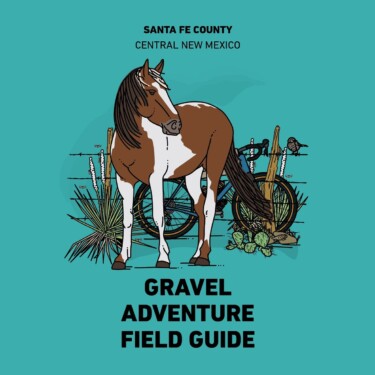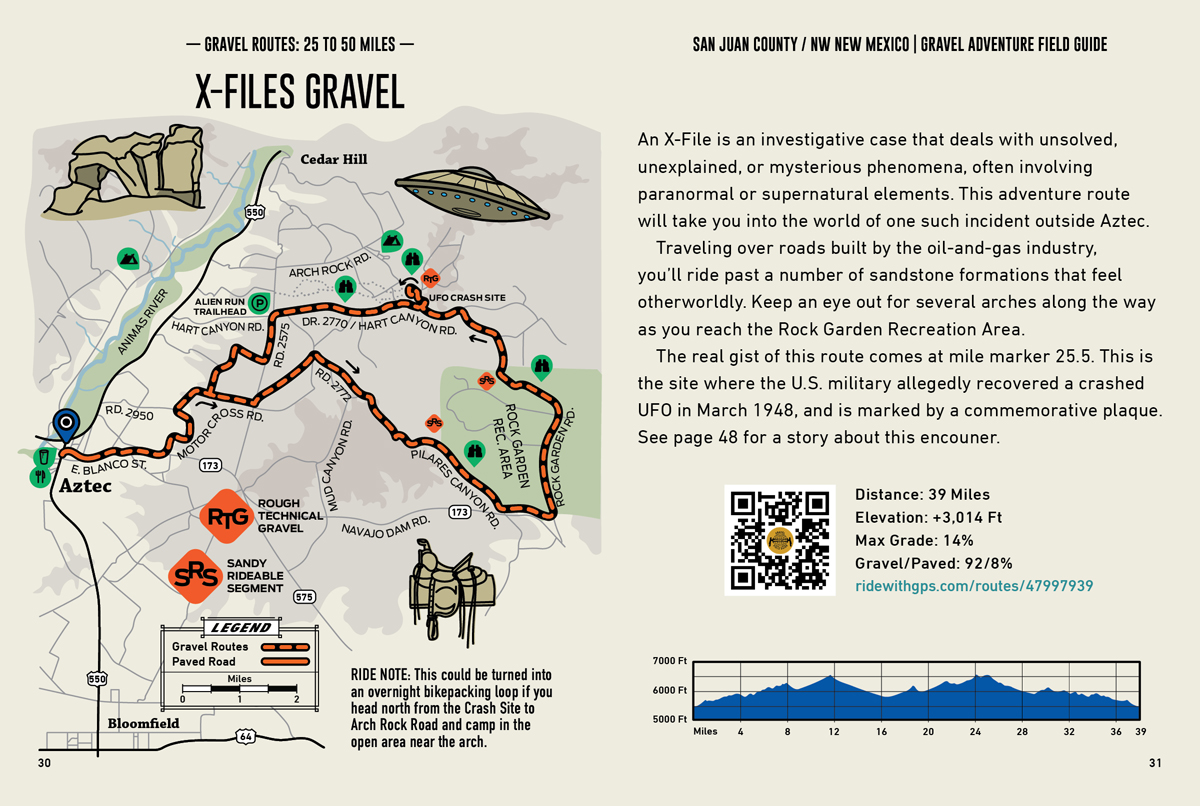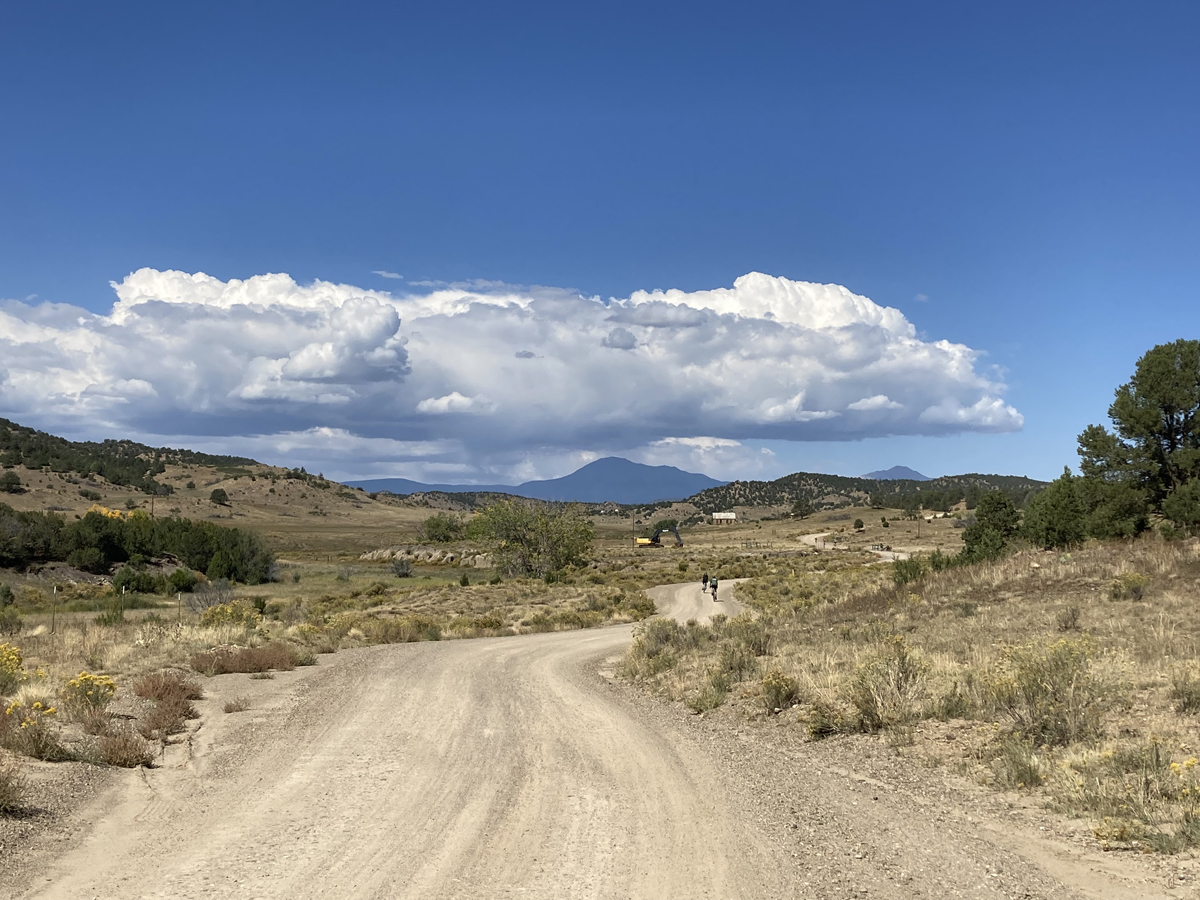“I am a reader of maps…I read them as others do holy writ, the same text again and again in quest of discoveries….” —William Least Heat Moon, River Horse: A Voyage Across America
“It is not on any map; true places never are.” —Herman Melville, Moby-Dick
By Don Scheese — According to the Federal Highway Administration, as of 2012 there were 1,357,430 miles of unpaved roads in the United States (35% of the total road mileage in our nation). If you are a map freak like me, you spend a significant portion of your time poring over maps, planning and fantasizing about future cycling trips, mainly on unpaved roads. Given the increasing popularity of gravel grinding (see my article “Why Gravel?” in the Early Spring 2022 issue of Cycling West), it seems more and more people are trundling over unpaved roads on gravel-specific bikes around the country, either through organized events or on their own, seeking less vehicle-trafficked, wilder routes.

But the number of organized gravel events may be on the decline, says Betsy Welch, senior editor at Outside magazine and authority on gravel cycling culture. In a December 2024 on-line article, “Velo’s 2025 Gravel Cycling Predictions,” she speculates that “we may have reached a plateau in gravel racing in the U.S., and there are various reasons for this.” Welch cites factors like expense fatigue, with some events costing hundreds of dollars to register for, and over a thousand in travel costs to ride to at distant locales; saturation of the gravel event calendar, with races now occurring on a weekly basis; and more of a “grassroots gravel” inclination among potential gravel grinders, causing riders to seek out events closer to home.
This means more cyclists looking for close-by adventure on their own. But how to find out about potential off-pavement routes near one’s home? Enter the Gravel Adventure Field Guide series, the brainchild of Colorado residents Juan DelaRoca and Stephen Beneski, who began publication of pocket-sized pamphlets in 2021. These colorful, well-written, and artfully produced guidebooks feature 10-12 gravel routes varying in length from under 25 to over 100 miles, from fairly easy to quite challenging, with useful information included on the local climate, ecology, and culture of a given area. Each route provides a paper map as well as a QR scan code connected to the RidewithGPS website, allowing one to download the route to a phone or Garmin, Wahoo, etc. As of January 2025, 16 guidebooks have been published, with most of them centering on rural areas in the western U.S. (and more are in the works). Copies are free at local bike and coffee shops in the areas in which guidebooks have been published, and they also can be purchased for $11 each from the website https://graveladventurefieldguide.com. (Full disclosure: I own four of the guidebooks and have 6 more in my cart on the website as I write.)

Let’s look at one of the guides as an example of what they offer. Before even getting to the route maps, the field guide for Las Cruces/Dona Ana County in New Mexico offers 22 pages of info and illustrations on local climate, geography, Chihuahuan desert ecology, history of roads in the state, suggestions on appropriate tire size, how to engage in “astrotourism” under the clear desert skies, and guidance on what kinds of bikepacking bags to use (along with a few ads from bike gear sponsors). All of this comes with lovely, colorful, even whimsical illustrations! And following 22 pages of route maps is further info on backcountry cycling and camping ethics as well as a section entitled “Desert Flow: A Cycling State of Mind”—what might be termed a philosophy of gravel grinding. The guide concludes with pages of information on local lodging, restaurants and cafes, art galleries, and bike shops. All this, in a pocket-sized pamphlet of 64 pages!
In an interview with Juan and Stephen, they explained how the idea for the guidebooks came about. Juan had recently moved to Trinidad, Colorado, and worked with the local bike shop and city economic development office to promote all the wonderful gravel riding in Las Animas County. Just as road cycling and mountain bike cultures have for decades coordinated with local towns and chambers of commerce to allure riders to come visit (and spend money in) an area for its wealth of trails and terrains, the Gravel Adventure Guide series aims to do the same for gravel grinding. Thus, gravel cycling has become part of the “sustainable tourism” trend growing across the country and world. Not coincidentally, the “Trinidad Rad” gravel event, now part of Lifetime Fitness’ series of gravel races, began in 2021, the same year that the “Trinidad/Las Animas County Gravel Adventure Field Guide,” the first in the series, was published.

Other towns followed the example of Trinidad: Patagonia, AZ (home to the Spirit World 100 gravel event), and Bend, Oregon (home to the 5-day gravel stage race, the Oregon Trail Gravel Grinder). In my home state of New Mexico, guides have appeared for Las Cruces, Santa Fe, and San Juan County (with another to come out of Angel Fire, a mountain biking mecca in the northern part of the state). How do these guides originate? Often times it involves an organic process in which resident cyclists team up with local and state officials in economic development agencies to research, write, and produce a gravel guide. Production costs are covered by various bicycle gear sponsors as well as by state and local government funding. Upon publication of a particular pamphlet, Juan and Stephen then produce a short video on their website to help promote it.
Typically, the suggested routes include riding on a variety of surfaces. As anyone who has ridden gravel routes well knows, the term “gravel” is (echoing Walt Whitman) large, containing multitudes. It can mean “champagne gravel,” i.e., hard-packed, smooth, rail-trail-like surfaces; or contain loose or sizable stones, i.e., “chunky gravel”; it may comprise soft dirt and/or sand; it can also consist of broken-up chipseal tarmac; or even include “baby-head” size rocks (sometimes requiring some hike-a-bike, depending on the size of the tires one is riding and whether or not your bike has any kind of suspension). And as every experienced gravel grinder knows, any given route can include all the above riding surfaces. “Gravel” can also refer to wide Forest Service or BLM roads, ranging from so-called secondary byways to primitive two-tracks, or the occasional single-track mountain bike trail. And to access gravel routes sometimes requires riding smooth tarmac for miles and miles (which gravel grinders rarely complain about). Where riders have access to mass transit, it may include riding a train or bus to begin a route. In Albuquerque, for example, I have ridden the local commuter train, the Rail Runner, to the outskirts of Santa Fe to begin riding various gravel routes.
In addition to using the guide to Santa Fe County, I’ve also utilized the route info from the guides to Trinidad, Patagonia, and Las Cruces. Sometimes I’ve followed the exact routes suggested; other times, after consulting local Forest Service and BLM maps, I’ve created my own variations, adding a personal touch. That is what I hope these gravel guides will do: encourage riders to not only follow established routes, but, using some creativity, create their own routes. Isn’t that what the very meaning of “Adventure” entails—a little (sometime more than a little) bit of the unexpected, the unforeseeable? As Henry David Thoreau implores us in Walden, “Be rather the Mungo Park, the Lewis and Clarke and Frobisher, of your own streams and oceans; explore your own higher latitudes…” Today we live in a world dominated by technology and industry, where virtually every choice we make involves less and less self-reliance, less risk—from the food we eat to the travel we engage in. It’s way past time to restore some good old fashioned Emersonian self-reliance to the American public.
So, use these guides, by all means, but expand upon them. Follow the routes in the maps, but don’t stop there. Discover a “true place” on your own. As Melville said, true places exist, but not on any map.
For more on the New Mexico Gravel Adventure Field Guide and other local editions, see: https://graveladventurefieldguide.com/







